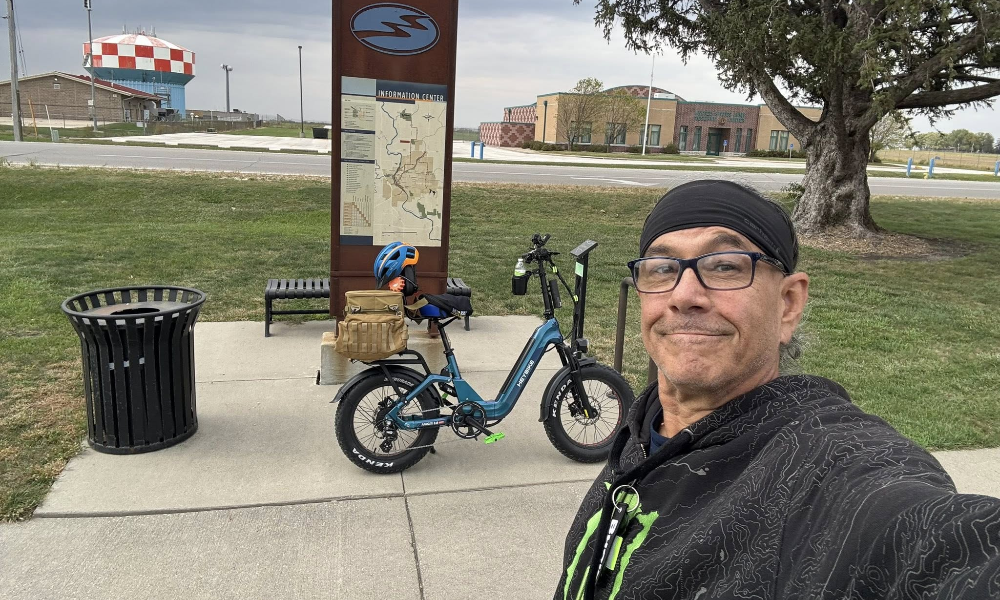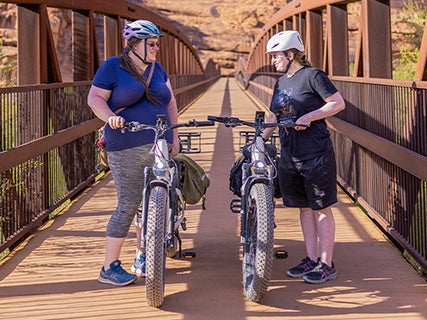After a tough slog over the hills, the only thing you want is to pop the bike into the shed. But it's important not to neglect your ride. A clean bike works smoothly and saves you money in the long term. Think about it - your bike has a collection of moving parts that can deteriorate when exposed to mud and debris. If you haven't cleaned your bike for a while, you should show it some love.
Whether you want to learn how to clean a mountain bike or how to clean rust off a bike, you've come to the right place. Here is a step-by-step guide on how to clean a bike.
Why and When Should I Clean My Bike?
You should clean your bike whenever you take a ride. If you take a short ride, you don't need to give it a thorough clean. At the very least, you should wipe the chain and lube it. If the bike is coated with mud, you should clean it before putting it away.
If you don't have access to clean water, you should take your bike to a cleaning station. If you're traveling, you should look for bike-friendly hotels.
Another sign that your bike needs cleaning is touching the chain with your finger. If it comes out black, that's a sign it needs some cleaning. Still, too much noise when peddling means some parts are dirty.
To also read 'The Ultimate E-Bike Maintenance Checklist'
Essentials Needed to Clean a Bike
If you want to give your bike a spotless look, you'll need a few essentials. At the basic level, you must have a bucket of clean water and soap. Other essentials include:
Lubricant
You can use wet or dry lube. Dry lube is the best when riding in the dirt. It tends to be more efficient and friendly to the pocket. The only downside is that it can rinse off in the rain. Wet lube, on the other hand, fits in wet conditions and won't rinse off in the rain. However, dirt and grime can stick on it, so you may want to rub excess lube. The gritty paste is not good for the longevity of the drivetrain.
Bike degreaser
It cleans the gummy parts of the bike chain. You should only use environmentally-friendly products. Avoid turpentine and kerosene.
Brushes and rags
Keep plenty of these for oil, grease, wax-related tasks, and general cleaning.
Workstand
Optional but helpful. It helps you position your bike at a comfortable height and access hard-to-reach areas.
Bike Chain cleaning device
There are three types of cleaning brushes. First, you'll need a soft-bristled brush to clean the frame. A paintbrush can also work here. Secondly, you need a brush to clean the extra-filthy zones like cranks and tires - it looks like a toilet brush. Finally, you need a gear brush or a stiff-bristled gear brush. For the soap, you need an environmentally-friendly detergent. Of course, a degreaser will also do the magic.
If you're on a budget, you can buy a bike cleaning kit. It consists of a degreaser, cleaner, lube, and sponge. If your ride has disc brakes, you need a special cleaner to remove oil, dust, and grime.
There's a whole range of bike cleaners - you can try a few. The most important thing is to check whether the product is safe for disc brakes. Some cleaners can double as degreasers. Such products are easier on the pocket and friendly to the environment too. Of course, there's always an option to go for products with minimal environmental impact.
Keep in mind that water coming from a high-pressure hose could damage the sensitive parts of the bike.
How to Clean a Bike in 7 Simple Steps
Just following the details steps to clean your bike thoroughly.
1. Clean the drivetrain
To clean the chain, you need a special brush. The last thing you want is to contaminate the braking surface with filth. If you make this mistake, you may be forced to change the brake pads. A chain cleaning device will also help to dislodge the stubborn grime - a flat screwdriver can also help.
Your drivetrain (rear cassette, chain, front chainrings, and rear derailleur) deserves special attention.
2. Wipe the disc brakes (surface down)
You should wipe the brake disc surface down. Be careful because there will always be a muck that can get to the rotors. A paper towel can help you avoid this mistake.
3. Rinse your bike and apply detergent
To rinse the bike, you need a garden hose, sponge, and water. At this point, any loose mud and dust will come out easily. The general rule of thumb is to avoid targeting the water at the hub and cranks. If water gets to these areas, that could be a disaster.
A simple hose, bucket, and sponge will remove the mud and grime buildup. If you're using a jet wash, you should turn the intensity down.
4. Brush clean
As you clean the bike, you should pay attention to the moving parts. A smaller brush will get to the narrow spaces. Remember the underside - an old rug can be useful here. After a few cleans, you'll develop a routine.
Work from top to down - headset, handlebars, seat stays brakes, top tube, and front fork. Finish by cleaning the cranks, cogs, chainrings, and chain stays.
At this point, you should focus on the non-oily parts of the bike like the handlebars, brake levers, saddle, and gear shifters. If you have a scrub brush, you may want to get into the nooks and crannies of the frame. Once it's clean, you can spot any scuffs that happened during the ride. You can dab some alcohol to remove them from the frame.
If your bike has rim brakes, use hot water and a sponge to remove as much dirt as you can. After you're done, give them a good rinse.
If your bike has disc brakes, you may want to use a rim disc cleaner. And because they are aerosols, you should wipe them away with a clean rug. Make sure you don't get the disc cleaner to the other parts of the bike.
For the wheels, you need bigger brushes that can get into every nook and cranny with less effort. You can start from the valve before you hit the hubs and spokes. After that, flip the wheel to work on the opposite side.
5. Rinse the bike
Spin each wheel and rinse with clean water. You may want to use the brush to clean the areas and rinse again. It's easier to spot issues when the bike is clean.
6. Dry the bike
If you have a work stand, use an old dish cloth to dry the bike. For the braking surface, use a silicone spray. This will not only reduce the muck for your next outing but also make it shine. As you dry your bike, you should not just focus on the frame. Make sure there's no water on the bolt where rust can settle.
If you don't dry the bike after cleaning, you could leave water marks all over. Use a microfiber cleaning towel to do the job.
7. Apply lube
Are you wondering how to clean rust off a bike? You should refer to the manual and apply lube according to the manufacturer's instructions. Be careful not to apply on braking surfaces. To lube the chain, hold the bike upwards and turn the pedals in an anticlockwise direction. Then, drip the lube on the chains rollers and add a few to the pivot points.
The other parts that need lubrication are brakes and derailleur levers. You can apply a drop or two to keep them functioning properly. The pivot points can also become rigid so they may need some lube.
To finish it off, you should wipe the excess lube. If you're not careful, this can affect the performance of the bike.
Without lube, the drivetrain could rust and may be forced to replace.
If you're still worried about how to clean a mountain bike, the process is the same.
Some Extra Bike Cleaning Tips You Should Never Miss
- As you clean the bike, you should pay attention to those areas that need replacement. More specifically, check for worn-out components on the brake pads, chain, wheels, and tires.
- Apply specialist polish after you clean the bike. This makes it easier to wash next time. You should avoid using household polish.
- A work stand can be a time-saver, especially if you're washing the bike during those muddy days. It also keeps your bike in one position as you give it a thorough clean.
- Some bike products will make cleaning a breeze.
- If your bike has a saddle or water bottle, you should never get those parts wet.
- Over-lubricating the bike can lead to poor performance. You should only use a mild lubricant to prevent the excessive wear of the moving parts.
- Never mix your tools, rags, and buckets. You don't want to cover the other parts of the bike with the grease from the drivetrain.
- Never use a high-pressure hose. Water can get into the bearings and may eventually degrade them.
Conclusion
A clean bike looks nice and works better. With a few regular washing, you can keep your ride free from rust and avoid costly repairs. All you need is a handful of tools. If you're not sure how to clean a bike, make sure you follow the above steps. After all, you want a clean bike that will run smoothly for many years to come.



Share:
Full Guide to Best Electric Hunting Bikes
What's Gravel Bike & Why It Becomes Popular